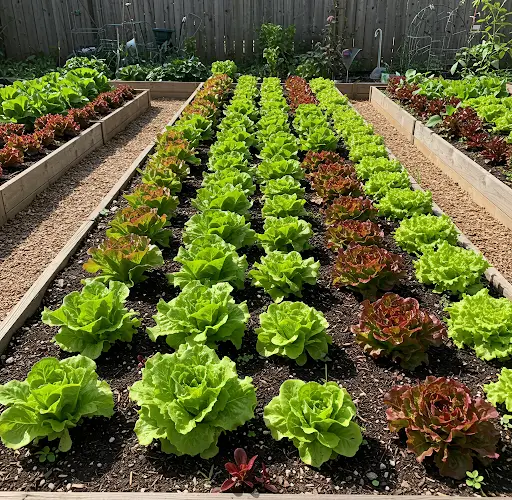Grow a Lush Lettuce Garden at Home with This Unique Idea
Lettuce is one of the easiest and most rewarding leafy greens to grow at home. With its crisp texture, refreshing taste, and versatility in the kitchen, it’s no wonder home gardeners are always looking for better ways to grow it. Whether you’re short on space or simply looking for a creative gardening approach, this unique idea will help you grow a thriving lettuce garden right at home.
The Vertical Lettuce Tower: A Space-Saving Marvel
Instead of planting your lettuce in traditional ground beds or large pots, consider building a vertical lettuce tower. This innovative method saves space and promotes healthy, abundant growth by giving each plant plenty of light and air circulation.
A lettuce tower is essentially a tall cylindrical planter with planting holes arranged around its sides. This allows multiple lettuce plants to grow from all angles, utilizing vertical space rather than just horizontal. It’s perfect for balconies, patios, or even small backyard corners.
What You’ll Need:
-
A large plastic drum or a sturdy, tall container (around 3-4 feet in height)
-
A sharp utility knife or hole saw
-
High-quality potting mix
-
Compost or organic fertilizer
-
Lettuce seedlings or seeds
-
Optional: A PVC pipe with holes drilled into it (for central watering)
How to Build It:
-
Prepare the Container
Select a plastic drum or container that can stand vertically and hold soil without collapsing. Clean it thoroughly and cut evenly spaced holes (about 3–4 inches in diameter) around the sides using a hole saw. These will be your planting pockets. -
Create a Central Watering System (Optional but Recommended)
Drill several small holes into a length of PVC pipe and place it vertically in the center of the drum before adding soil. This allows water to flow evenly from the top to the bottom, keeping the entire tower hydrated. -
Fill with Soil
Begin filling the container with a rich mixture of potting soil and compost. If using a central pipe, fill soil around it. As you fill, lightly compact the soil to remove air pockets and provide support for the plants. -
Plant Your Lettuce
Once your soil is in place, plant your lettuce seedlings into the holes around the sides. If starting from seeds, plant them directly and water gently. The top of the tower can also be used for planting, maximizing the number of plants. -
Water and Maintain
Water thoroughly after planting. Keep the soil moist but not soggy, and place the tower in a spot that gets at least 4–6 hours of sunlight daily. Rotate the tower every few days if one side receives less sun.
Why This Method Works
-
Better Use of Space: Growing vertically allows for a larger harvest in a smaller footprint. A single tower can hold dozens of lettuce plants.
-
Improved Airflow: Vertical gardens reduce the risk of fungal diseases by promoting good air circulation.
-
Easy Harvesting: The side holes make it simple to snip leaves as needed without disturbing other plants.
-
Water Efficiency: With the optional central watering pipe and gravity helping distribute moisture, less water is wasted.
Tips for Success
-
Use loose-leaf lettuce varieties like Romaine, Butterhead, or Oakleaf, which do well in vertical systems.
-
Incorporate slow-release organic fertilizer or compost tea every few weeks to boost growth.
-
Watch for pests such as aphids or slugs, which can hide in the crevices. Neem oil spray or a homemade soap solution can help keep them at bay.
-
Harvest outer leaves regularly to encourage continued growth from the center of each plant.
Final Thoughts
A vertical lettuce tower is not only functional but also adds a unique visual element to your home garden. It’s ideal for those with limited space, and it provides a fun, hands-on way to enjoy fresh, homegrown greens all season long. Whether you’re an experienced gardener or just starting out, this creative approach to lettuce gardening can transform the way you grow and enjoy your food.
Start small, experiment, and soon you’ll have a lush lettuce garden right outside your door—ready to harvest, eat, and share.



